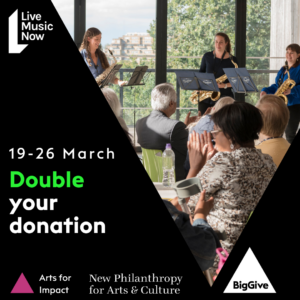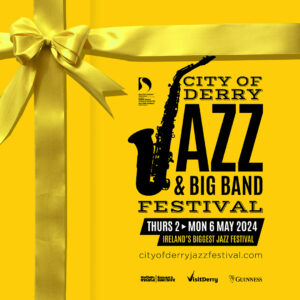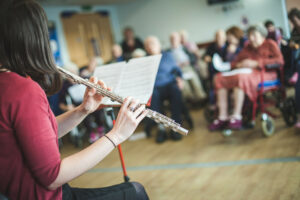.jpg) Gillian Green (LMN Auditions Director and harpist) spoke with our newest musician who also happens to be the Official Harpist to the Prince of Wales, Anne Denholm.
Gillian Green (LMN Auditions Director and harpist) spoke with our newest musician who also happens to be the Official Harpist to the Prince of Wales, Anne Denholm.
Gillian Green: Congratulations and a warm welcome to LMN. As HRH The Prince of Wales is our Royal Patron, his Official Harpist is offered a place on the scheme and we are delighted that you have accepted this invitation. We very much look forward to working with you. Tell me a little about your background………
Anne Denholm:
I was born in Carmarthen and grew up there until I was sixteen. My family are mostly Scottish however, so I am a bit of a Celtic mix! While I was still a pupil at Ysgol Gyfun Gymraeg Bro Myrddin I started going to the junior department of the Royal Welsh College of Music and Drama, and since then I have studied at the Purcell School, the University of Cambridge and the Royal Academy of Music.
GG: With LMN in mind what would be your main focus be as a harpist?
AD: The harp is an incredibly powerful and versatile instrument, and can thrill or soothe any audience. My main focus will be to take the harp to as many different audiences and contexts as possible, to understand more of what this instrument can do, and of course to bring entertainment and relief to people.
GG: I know that you are involved with The Hermes Experiment – tell me about this.
AD: The Hermes Experiment was formed back in September 2013 and comprises a quartet of soprano voice, clarinet, harp and double bass. There is no existing repertoire (that we have found!) for this combination and so we commission new works, write our own arrangements and perform live free improvisation. So far we have had the privilege of working with 28 composers, and there is much more in the pipeline! Our goal is to perform excellent and innovative new music in ways that are engaging and interesting for all audiences.
GG: So this is contemporary and experimental, how might you make this relevant/accessible to those not accustomed to the genre?
AD: Although contemporary classical music uses compositional idioms that are still unfamiliar – Mozart and Beethoven have had hundreds of years to become familiar to our ears! – this music is incredibly colourful, gestural and expressive. This means that if presented in an effective way, such as through using spoken programme notes, audiences are fully able to engage with and respond to this music. It is also crucial to take contemporary experimental music into community and education contexts: for example, we have already found that it is an incredibly valuable and versatile idiom for working with young children, using its amazing capacity to create vivid sound worlds and stories.
GG: Are there any specific areas that you would like to explore with the Menuhin Centenary in mind?
AD: Yehudi Menhuin worked across many musical genres, including contemporary classical music and cross-cultural collaborations. I am very passionate about both these areas, and the centenary is a wonderful motivation to further pursue these endeavours. Menhuin also made music for peace and reconciliation, and I wonder whether there might be a potential project in this context given the war-torn state of so many parts of our world at present.
GG: What other projects have you in the pipeline?
AD: The Hermes Experiment are currently working hard towards our first season concert of 2015-16, themed ‘Metropolis’, which involves six new pieces! I am also delighted to be giving ten concerts for ‘Bach to Baby’ during October, in addition to visiting Birmingham to play with the CBSO. In the longer term I have a few ideas for projects to promote the harp and to explore Welsh contemporary music, but I wouldn’t want to give anything away just yet!
GG: The photograph is one of you playing the Royal Harp in a concert at Fishguard International Music Festival. Tell me about this instrument.
AD: The Prince of Wales’ harp is a beautiful instrument in both sight and sound, and I am hugely enjoying getting to know it! It was presented to The Prince by the Victor Salvi Foundation in 2006. The harp’s design incorporates elements from The Prince’s badge as well as Welsh national symbols, such as dragons and daffodils.
GG: Thank you Anne and I really hope that you will find your work with LMN enjoyable and rewarding
We leave you with a short film of Anne Denholm performing a piece commissioned by Glasgow University for Professor Keith Vickerman, to celebrate his groundbreaking research in the field of African Sleeping Sickness. Awuya is inspired by the changing forms of deadly trypanosomes, by Central African drums and harp, and by a lullaby from a tribe decimated by sleeping sickness in the 1940s. The original words of the lullaby, sung to a little girl called Awuya, are hauntingly reminiscent of the symptoms of the disease. In his new film, Laurie Irvine has incorporated these ideas, enhancing Anne's powerful performance






